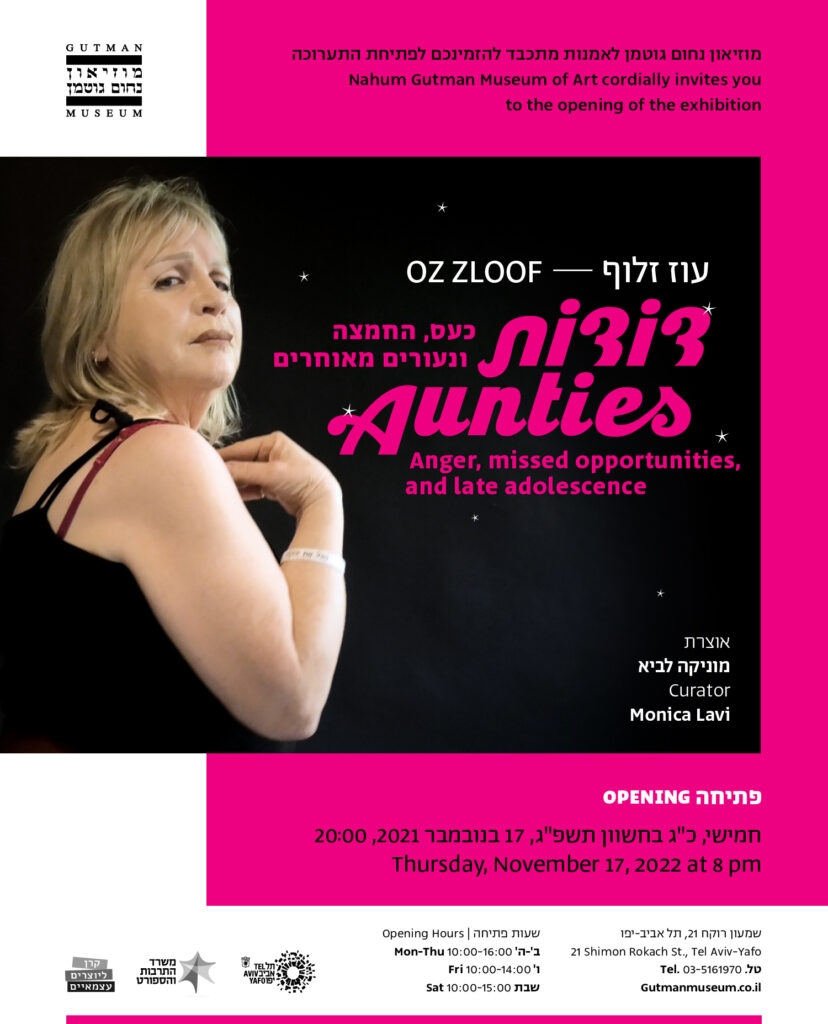Oz Zloof turns his gaze to the dreams, emotions, and milestones of artists who have “missed the boat” and are no longer young or promising for the art world. These are artists who stubbornly continue to make art in various mediums: theatre, poetry, painting, dance, and music. Some people in the art world have given these men and women (mostly women) the disparaging title of “aunties.”
The exhibition is a kind of hall of mirrors comprised of video works through which are re-reflected stereotypes, prejudices, hierarchies, types of taste, youth and old age, the desire for acceptance and the fear of exclusion. Also reflected are the actors: the artist, protagonists of the video works, viewers, and museum officials.
Zloof – curator, social activist, educator, stage director, and video artist – dares to touch upon the creative people featured in his videos very gently, from a stance of closeness. He avoids all of the pitfalls surrounding, such as pathos, providing artistic value, being judgmental, ageist, a “Peeping Tom,” condescending, and more.
The art actions of the artists he has filmed fall under the definition of “art in the community” or “community art activities”, arising as part of the desire to respond to the needs of local creatives by operating community based art galleries, workshops, and art classes. We can view them as an antithesis to the usual art education track into the art world beginning at a young age, and in the formal art education institutions. Art in the community can also be identified as signs of the individual’s increasing resistance to the alienation in post-capitalist society and the striving for self-expression.
Zloof is a member of the Tarbut Movement (culture movement) establishing urban kibbutzim of artists settling in Israel’s geo-socio periphery who are committed to art education. At the same time, Zloof is actively engaged in promoting the art of the Queer community and especially Queer youth. Concrete action in the world extracts the struggle for a more just society from theory to practice and generates change. Using the existing models of “Zionist fulfillment” is an especially brilliant move, filling the void left by the ideological youth movements, since the Tarbut Movement is based on the model of the youth movement fulfilling itself through settlement and practical action.
The possibility of connecting various types of social activism and discourses on identities creates a swirling movement within the art world. At the sight of the individuals in Zloof’s video, our ego cracks and undergoes change. Perhaps we become better human beings. His oeuvre forces us viewers to think about ourselves, our prejudices, and actions in the world. The people he presents and his non-judgmental open attitude imbues viewers with a new and optimistic view.
Monica Lavi
Exhibition Curator


